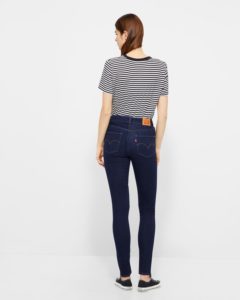 Today, almost any inhabitant of the planet can easily answer the question of which trousers are the most popular in the world. Of course, these are jeans, special trousers with a special history.
Today, almost any inhabitant of the planet can easily answer the question of which trousers are the most popular in the world. Of course, these are jeans, special trousers with a special history.
Experts give a professional definition of fashionable pants. Jeans are particularly durable trousers that are traditionally made from cotton threads. A special feature of the jeans are the rivets located on the pockets.
It is recorded in the history of fashion that jeans appeared in America in 1853. At the request of one gold miner, durable pants were made by an enterprising emigrant merchant from Europe, Levi Strauss. He, without a doubt, knew that Italian weavers from Genoa had been making durable fabric - twill - for several centuries. Levi didn't have twill at hand, so he sewed the first pair from canvas.
She gave the pants special strength, and more and more people wanted to get the same ones. According to their creator, jeans were assigned the role of work clothes.
Reference! The name of the second “author” of the popular product, Jacob Davis, has also been preserved. It was he who came up with the idea of strengthening the seams on pockets with metal rivets.
Canvas was used to make trousers for about 2 decades, and then was replaced by a dense cotton material - denim.
 The name of the pants - “jeans”, as well as the name of the fabric from which they are made (“denim”) are associated with the geographical names of European cities.
The name of the pants - “jeans”, as well as the name of the fabric from which they are made (“denim”) are associated with the geographical names of European cities.
Twill, which was made in Genoa for several centuries, spread throughout the continent.
Reference! With twill weaving, the weft and warp threads are arranged diagonally, due to this a characteristic diagonal scar appears on the front side of the fabric.
In France, the manufacturing town was first called Gene, then Jean. The fabric itself was also called that way. Pants made from jean fabric began to be called jeans. The letter “s” that appeared was added according to the rules of the English language to indicate the plural.
French tailors liked the linen from Genoa. But its color (light brown) did not seem the most attractive to them. The French town of Nimes was the place where twill was first dyed blue. Subsequently, such material began to be called “denim” - from Nîmes.
 Today, denim is a fabric that is made using modern technologies. At the same time, manufacturers preserve classic traditions. The main thing in denim production is cotton thread.
Today, denim is a fabric that is made using modern technologies. At the same time, manufacturers preserve classic traditions. The main thing in denim production is cotton thread.
Cotton grown in different parts of the world has different characteristics.
Asia grows large quantities of cotton used to make denim. Its feature is short-staple fiber. Today this cotton has become the most popular in the production of denim.
Cotton from Mexico is distinguished by its appearance and high quality. It is very smooth, shiny and feels very smooth to the touch.
The main attractiveness of cotton from Zimbabwe is the best ratio of affordable price and decent quality.
Cotton from Barbados became the basis for soft and at the same time strong cotton fabric. This limits its use for denim items, which are expected to provide the usual strength. Therefore, such cotton is used minimally in the production of denim products.
Reference! The share of cotton used in denim production is 7%.
 Regardless of the country of origin, cotton goes through several processes before it becomes denim.
Regardless of the country of origin, cotton goes through several processes before it becomes denim.
The collected cotton is cleaned of foreign impurities (leaves, bolls), loosened and mixed into a homogeneous mass.
Their purified plant matter is spun into threads. The spinning process is repeated several times. First, thick threads are obtained, which are twisted until a thread of the desired thickness is obtained.
Having received thin threads, they are dyed. For a long time, only natural indigo dye was used for this; today, along with it, specially created artificial dyes are also used.
In the process of creating the fabric, dyed and undyed threads are used. Therefore, the resulting denim on the back side does not have the same color as on the front side.
The result is high-quality denim, which, thanks to the efforts of fashion designers and tailors, turns into favorite things for many.